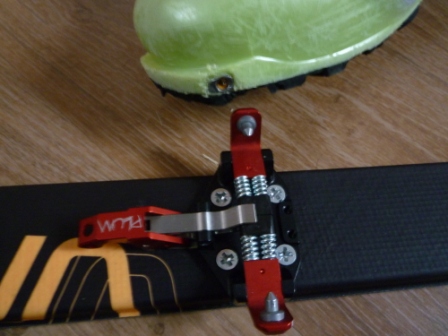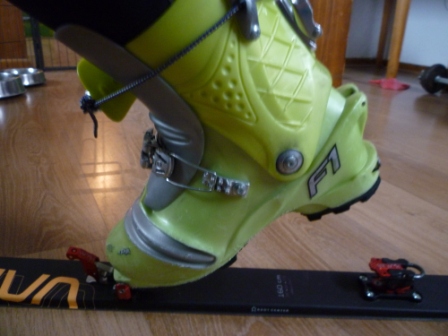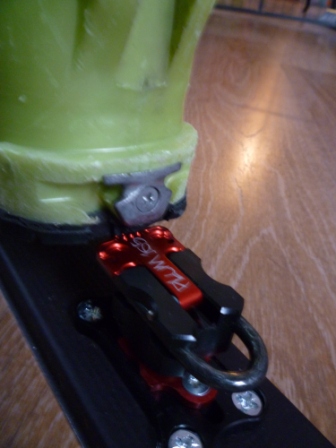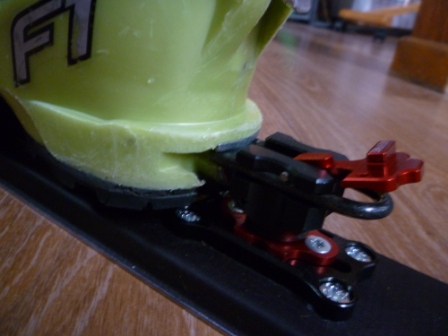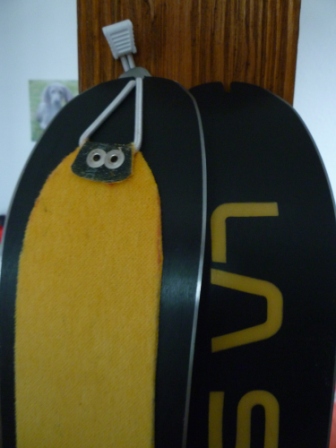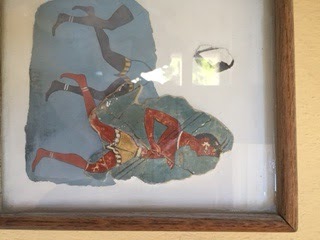Written by Stacey Holloway - https://wayrunning.wordpress.com
A couple months ago Robbie Britton caused a stir on the ultra-running facebook group with his article on Fast Running blog ‘Should female runners get double lottery chances in male dominated races?’ A lot of people, all of whom were ultra-runners and the majority of which were men, gave their opinion on both, why women were not entering and how and should this be solved. Anyway, I thought we should just ask women why they were not entering! So I posted the text below onto the Adventure Queens all women outdoor adventure group to find some answers, and hopefully solutions.
‘There is a debate happening on the ultra-running FB group at the moment about helping get more women into ultra-running. I thought we could actually ask some women instead of guessing. Can I ask any runners, especially those who have ran half and full marathons; What stops you from entering an ultra-marathon? And do you have any ideas what may inspire or help more women get into the sport? Thanks!’
One assumption made by the ultra-runners, was that women in general, do not want to run an ultra and that is why they do not enter. However, the majority of the responses we received (around 40 women commented) began with ‘I would love to do an ultra, but….’
Below I have grouped the responses into to four categories in order of frequency mentioned.
- Training
- Ability
- Time/logistics.
- Lack of knowledge of races.
1. TRAINING
A general perception of ultra-running was how long it would take to train for an ultra, that this endeavour would be greater than that needed to run a marathon.
‘Definitely to do with time. Training for a half or full marathon is easier time wise. You have to be pretty focused for an ultra!’
2. ABILITY
Comments included lack of discipline to train, being the wrong body shape. Being too slow was a common barrier for women as was fear of injury, not being strong enough and not having the right mind set.
‘Hi there, I’ve run several marathons and half marathons, and entered two ultras and pulled out as I worry about being timed out of an ultra. My marathon pb is 4.45 and half marathon pb is 2.00.’
3. TIME AND LOGISTICS
A big barrier for women was time to train or race due to family and work commitments. Other logistic issues included not having a support crew, cost of races and not wanting to run alone.
‘But an ultra seems like a whole different ball game!
4. LACK OF KNOWLEDGE OF RACES.
Another recurring theme was simply, women did not know where to find out about smaller local ultras, or even trail races. This also included not knowing how to find cheaper races.
SUMMARY
As women were writing about what holds them back, other women began providing advice, support and motivation. It became clear that for the majority of these women, who had proclaimed they would ‘love’ to enter an ultra, were held back from entering due to their perception of an ultra-marathon and what it would take to complete one. The reasons given were all very valid and real, yet on revealing some truths about the reality of the back of the pack ultra-runner several women began to consider, that in fact ultra could be for them. In some cases it was a lack of self-belief, this was greatly helped by supportive comments from other women – the role models.
To answer my proposed question – what stops you from entering? From this group of women, it was a perception of ultra-running that did not match up with their perception of themselves. We can through media and race coverage and through roles models address both of these. There were undeniably the time limitation barriers experienced by women, especially for women with a family.
SO HERE TO SMASH SOME MYTHS AND TEAR DOWN THOSE MISLEADING PERCEPTIONS!
-
IF IT IS LONGER THAN A MARATHON, IT IS AN ULTRA-MARATHON! SO, TRAINING FOR A 30MILER IS NO DIFFERENT TO TRAINING FOR A MARATHON.
-
IN FACT, TRAINING FOR A 50MILER DOES NOT REQUIRE ANY MORE TRAINING THAN THAT FOR A MARATHON.
-
ULTRA-RUNNING IS SLOW. IF YOU ARE A SUB 5HOUR MARATHON RUNNER, YOU ARE GOING TO BE FINE. THE LONGER THE RACE, THE SLOWER YOU CAN GO!
-
ULTRA-RUNNERS WALK. WE WALK A LOT AND WALK UP HILLS.
-
FOR ULTRAS UNDER 50MILES YOU WILL NOT NEED A CREW. IF YOU DO NEED A CREW ASK ABOUT. PEOPLE, EVEN STRANGERS WILL BE WILLING TO CREW FOR YOU. ASK THE RACE ORGANISERS FOR HELP FINDING A CREW.
-
AN ULTRA-MARATHON IS NOT JUST A LONG MARATHON. THERE ARE A LOT OF STOPS, EATING, TALKING AND MAKING NEW FRIENDS.
-
ULTRA-RUNNERS COME IN MANY SHAPES AND SIZES AND THERE IS A HUGE RANGE IN AGES. TURN UP AT A RACE AND SEE FOR YOURSELF. NEVER JUDGE A BOOK BY ITS COVER!
-
MOST ULTRAS ARE ON TRAILS, RISK OF TRIPPING MAY BE HIGHER, BUT RISK OF INJURY FROM REPETITIVE RUNNING IS LOWER.
-
ULTRAS COME IN MANY FORMATS, PICK THE RACE FOR YOU. TIMED EVENT, LAP COURSES, SMALL AND LARGE NUMBER OF COMPETITORS. SEE LDWA CHALLENGE EVENTS.
-
JOIN AN ULTRA RUNNING FACEBOOK GROUP AND SCROLL THROUGH PAST QUESTIONS OR CONTACT A RACE DIRECTOR AND ASK TO VOLUNTEER. IT IS A GREAT COMMUNITY AND YOU WILL LEARN LOADS AND BECOME PART OF THE FAMILY
-
AND FOR MORE INFO ON WHERE THE RACES ARE, CHECK OUT HTTPS://WWW.RUNULTRA.CO.UK AND HTTP://FELLRUNNER.ORG.UK/RACES.PHP
Note: I have been asked if I should repeat this asking a group of men, I agree you may get similar results. I did ask as an open question on twitter to all genders. From men I mainly got the reply ‘nothing stops me.’ One transgender person replied to say anxiety stopped them from entering any races.
Written by Majell Backhausen
Races becoming know by their acronyms, are also becoming in demand events to attend.
Let me give you insight to one of Switzerland’s most well know, four letter events- TVSB
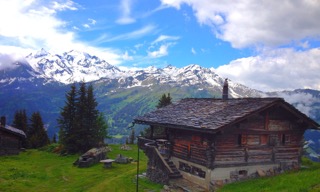
The main event has stout characteristics, with 111km and 8,400m of vertical gain- aptly named X-Alpine. Topping out at Orny with 2826m and traversing through historical locations such as Grand Col St Bernard.
And like most enthusiastic and committed organisations, they hold 4 other, events on the same weekend. Allowing people of all ages and ability levels to experience trail running, Swiss style.
Traversèe: 61km with 4000m elv. gain
Liddes-Verbier: 29km with 2500m elv. gain
X-Direct: 6km with 650m elv. gain
Discovery Trail: The Sunday morning event for kids aged 4-14 y.o.
Verbier and its surrounding regions including Pays du St-Bernard (Yes, its symbols is the St-Bernard dog) are investing a lot of time an effort, into its Summer season offerings.
Is it working? Based on a successful 8th edition of TVSB. Its certainly on the right track or trail, I should say.
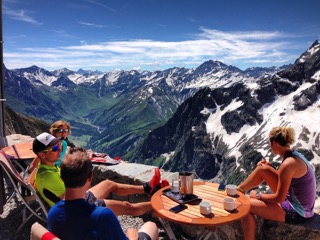
Switzerland is very… beautiful, but it is a very clean beautiful. Although I am an Australian, I can tell when I enter Switzerland, it has a special look and feel to it.
Its orderly, chalets are uniform, its mountains and gardens are beautiful- Just like Toblerone.
Except when a man, asks you to lowering yourself, face first down a damn wall from 100m high. At this point, I started to question the straight Swiss rationale. But it was legitimately safe and fun.
There are different Valleys within Valais (south west pocket of Switzerland). They all produce a different cheese, are home to different fighting cows and have different, yet still beautiful views, of the same mountains. Each valley is home to different mountain huts, housing mountaineers, day hikers and guardians all summer long.
The mountain huts hold a different view of the mountains, which can only be described as utterly magnificent.
Visiting the Valais Region for the TVSB event, allowed myself and PIC Lucy, to experience some of the summers best activities.
Probably not ideal for event preparation, but for experiencing the region, meeting the locals and getting an understanding of the history, they are all, must do’s.
Jumping off a mountain from 2000m high, with a paragliding wing and a large man strapped to my back, was a little nerve racking. Until he humbly mentioned, that he is 3 times, Swiss National Champion in Paragliding. Its the middle ground between skydiving and base jumping. My advice is to continually acknowledging that you feel fine and would like to go faster and be in control of the steering, from time to time. That way, your in for one incredible ride.
Not partaking in the TVSB 111km event, was due to the upcoming Skyrunning World Championships. Being 2 weeks away, it just wouldn't allow adequate recovery for the main event of the year.

TVSB statistics are very similar to The Skyrunning World Championships, this is a little indication, that TVSB is a serious mountain race.
Allowing a swift transition to the 29km event, participation in one of the TVSB events was still on the cards. I didn't want to miss the energy, that was building for the weekend ahead.
That week, we met Jules-Henri Gabioud, I was told he has won the Tor Des Geants… instant man crush. Then he proved to be one of the nicest people in the sport. We hiked up to l’A Neuve Cabane, for homemade rossti, made by his mother, with a view of Mt Dolent, which is home to the borders of Switzerland, France and Italy.
Jules went on to win the TVSB 111km X Alpine event. A BOSS!
There was no end to experiencing this region in its full light.
Going a step further to experiencing the mountain hut life at 3030m, was at the Valsorey Hut. Made even more fun, by not mentioning the small detail of being vegetarian, until after the tray of meat for dinner, was place on the table.
Staying in the Grand Col St Bernard Hospice was eye opening for two main reasons. One building dates back to over thousand years old and walking through it, makes you feel and realise, that 1000 years is a long time! Secondly, it is along the Via Francigena Pilgrimage, walked by many, which goes from Canterbury (UK) to Rome (Italy). Approximately 1700km… That is an Ultra!
Missing the 111km event, meant missing some of its great trails on race day. So It was planned to run on the TVSB course from the St Bernard Hospice to the town of La Fouly. A small climb over the snow covered pass and a large decent to town.
It was just one of those unforgettable days on the trail.
But Its not all running, when there is an event on the weekend, so we were matched up with one most enthusiastic e-Bike guides on the Mountains. Taking breaks for traditional herbal liquor and hearing the truth behind Swiss art, fighting cows and why Verbier is a place to ‘recharge, relax and become alive, again’.
The 29km event, although shorter, still packed the required punch for mountain running. With 2500m of elevation and organised with Swiss like military precision. It was what you hope for when you run, in this part of the world.
Although the 29km event is not a race. The organisation, hold this event to encourage participant to enter with no, ‘race’ like pressure. A way to encourage.
‘The ranking is not what matters most, which is exactly the philosophy we like’- Matt Girard, TVSB
With this philosophy, trail running will always be inclusive, welcoming and encouraging.
Growing in a way, that will largely ensure longevity for the sport.
I have repeated a number of adjectives in this article, mainly, beautiful, to try describe Switzerland.
But this word does not apply to Raclette. This stuff, is not conducive to a good night sleep, despite how enjoyable it is to eat and the laugh it creates for tourists, at the dinner table.
Trail Verbier St-Bernard, is on again in 2017, July 7-8-9th.
Also be aware, that when a Swiss local, describes a run as ‘Flat’, that immediately translates to very hilly with good views. There is no exception to this rule.
Written by Neil Bryant for the URC
I’ll be honest, I had never heard of Skimo till three or four years ago when a certain Kilian Jornet exposed it to me. Not personally of course, but I imagine there are a fair few of you reading this that were in the same boat. During Summer Killian is an incredible trail/mountain runner and in the Winter he swaps his running shoes for his ski boots, skis and skins, coming down even quicker than his summer descents.
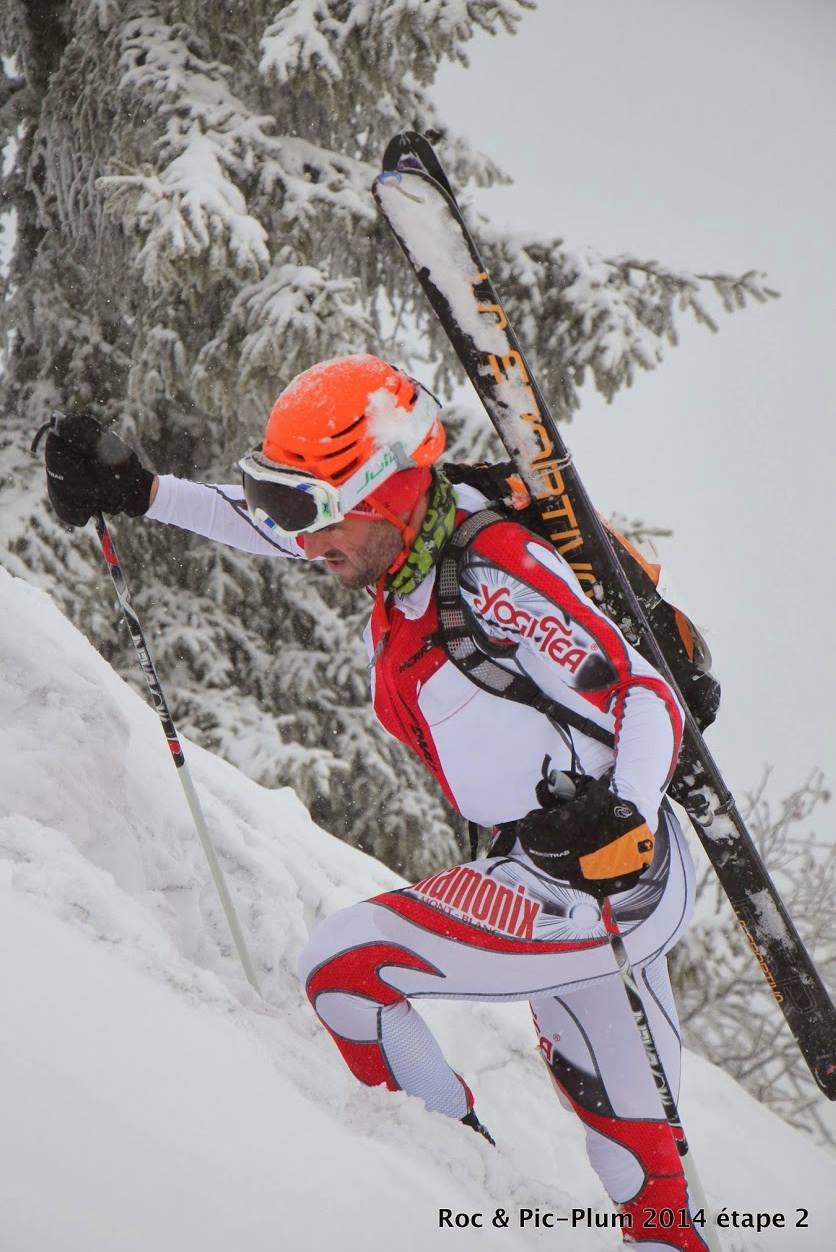
For me this was a world I literally knew nothing about and because it had this European exotic edge to it I think I was even more attracted. I had never skied in my life and had only spent a week snowboarding about 12 years ago. I was living in Bristol with no real skiable mountains in range so I think I had accepted I wouldn’t be getting into it seriously.
Life changed, and suddenly, or so it felt. I had moved to Chamonix as I wanted to escape my old job and life and more importantly, I wanted to be in the mountains.
I have now been living in Chamonix for over two and a half years, and our third winter is about to start. It has taken me a while to pick up the basics, but I now can go out and really enjoy myself while also getting an amazing workout. I also don’t need to use the lifts! It is fast (though not always!), liberating, exciting and takes you to some staggeringly beautiful places that nothing else can. You can do stuff that is simple and safe such as skinning up special skinning tracks and descending down pistes while at the other end of the spectrum more exciting stuff takes you far away from the crowds to the wild backcountry where there is a danger of avalanches and falling down glacier crevasses. Navigation, safety and reading the snow and weather makes the whole experience quite involved and incredibly rewarding.
Running is so simple in comparison, but there really is a crossover point that draws these activities together. It’s great to use the harsh Winters in the mountains rather than fight it.
What is it then?
So, if you are not sure, what actually does it mean, and what does it entail? Skimo is just a mix of Skiing and Mountaineering and is basically that. You would perhaps have a peak as an objective or you’ll just be going up a track and back down. The ascent is done in a number of ways, primarily though it will be on your skis which have special attachments which allow your heel to be free and skins on the bottom of your skis which are so named as seal skins were originally used. Skins glide easily forwards, but grip going backwards, making ascending possible. If conditions are a bit iffy then you can attach ski crampons which add a little bite. When it is too steep even for skinning, then the skis are mounted on your back and the bootpack commences. Bootpacking is just hiking really, and again if the terrain gets more technical, then boot crampons are utilised.
Of course beyond this is ice climbing etc. It is endless. Using skis means you can make the base of a winter climb (and return once complete) LOTS quicker.
Then of course, there is the descent which I don’t need to go into great detail about. An hour of hard graft to get to the top means you can be back at the bottom in 5 minutes. I imagine most of you have skied so will know how thrilling this can be! One of the great things about skimo, is the fact it can take you to some great places and that includes great descents with fresh powder!
What skills are required?
So, you have never skied before, could you try skimo? I think it would definitely be best to get some piste skiing under your belt first so there is a level of confidence with the descending. The great thing about piste skiing is it is great for practicing going down of course, whereas if you are spending an hour skinning to the top each time you are going to have less opportunities to practice the downs, not too mention you’ll be exhausted!
Once you are ok with the downs then maybe you can hire some touring skis and boots and find the local skintrack at the resort you’re in and try it out. This would be a great opportunity to get a feel for how it feels to skin (how hard it is!) and to get familiar with the boots, bindings and skins. Once at the top, you will generally be at the top of a piste meaning you have an easy, safe way down.
Equipment
One of the key differences between going running and skimo, is the amount of gear needed for skimo. There is a lot of gear, and depending how adventurous your outings get, you can need more and more. Avalanche safety gear should be carried all the time in off-piste areas, and if any glacier travel is happening, then crevasse rescue kit is also needed. I am not going to go into these areas, as I will leave that to you to discover if and when you get that deep into it. You should attend courses to learn about both.
I will just cover the basics.
Skis
This is the one thing where you can pretty much use any ski. For racing, around 90% of the race is spent going up, so weight is super important. The lighter and smaller the ski is, then generally the higher the skill needed to use it. If you only skin so you can enjoy the down, then a wider, rockered ski more suited to descending is ideal, though of course it will be heavier and wider making the up much harder. So, you need to work out what is your priority and of course what is your skill level. Going uphill is certainly my priority but I have to take into consideration my skill level which is not amazing, so a small, light ski is good, but certainly not a race ski, which I would struggle with on the downs. Like any sports equipment the lighter it is the more it costs. This is also true with skimo gear.
Bindings
There are two main types of bindings here. There is the frame binding which any ski boot can step into, and then the simple and light, tech binding or as they’re often called, the Dynafit binding as they are the company who pioneered the design. These are the most popular, but you do need a boot with the right fittings. My first set of old touring skis had a frame binding, which seemed to work fine. No real complaints, though they can be a bit weighty. My second, and current pair of skis have the superior Dynafits. They consist of a toe piece and a heel piece. The toe of your boot needs the two dimples on the inner side and outer side at the front. The toe piece has two points which fit tightly into these holes creating a solid hold that also act as a hinge when skinning. For the descent you simply set the heel to ski (different models have different methods) then step down which will hold your heel fast. You are then ready to descend (the ankle collar needs to be fastened too).
Here is the toe section of my tech bindings. The sharp pins on the ends of the red jaws close when stood on and engage in the dimples on either side of the toe on the boot, pictured just above. This creates a pivot for walking, and a solid hold combined with the heal mechanism for skiing.
As with many things, simplicity is king. As soon as things get too built up and complex, then there is more to go wrong. You really want this gear to be as dependable as possible!
You can see that I am obviously heavily in the tech binding camp, but don’t think that that means that the frame binding is a turkey. It worked fine for me over my whole first Winter.
Boots
Now here is a piece of equipment that can really make or break you. With downhill boots the fit is of course very important, but with touring boots it is even more important as you need them to fit well for the descent, but then switch to allowing your ankle to flex as you skin without letting your heel slip. Not a simple task for the boot manufacturers!
So, just a quick explanation of how the boots work. The boot will have between two and four buckles which will all be fastened when you are descending. When you climb you need the ankle to not be stiff, or not in ski mode. The ankle needs to be as loose as possible so you can have a long stride length that is fluid, this is the walk mode. To switch your boot from ski to walk mode, each boot will differ with mechanisms, but usually you flip a walk mode switch and loosen your top buckle/s/strap which will in turn, allow movement in the ankle. So if you have downhill boots without this walk mode, then they will be no good for skimo!
The above picture demonstrates the walk setup. Note the toe being a pivot point, and the string around the ankle being loose enabling ankle flexion.
The type of binding determines what type of boot you need also. If you use tech bindings, then you will need tech binding inserts. Simple!
The above picture shows the rear of the boot in walk mode. The red part on top is a flap that covers the pins below which prevent the heal getting locked in ski mode. You can also see the tech inserts on the heal of the boot.
Here is the rear of the boot in ski mode. Note the red flap on top has been lifted to expose the two pins, which when stood upon, lock into the boot.
The boots are where the most money should be spent if you have a tight budget as bad boots are a false economy. You will have to upgrade for your feets sake.
As with the skis, the more you pay, the lighter the boot. Weight for boots which can perform a range of tasks from the uphill skin to performing well on the downs has dropped to around a staggeringly scant 500g per boot now which is just incredible considering the demands put upon them. You could still attach crampons to this boot and climb mountains! Lighter boots are available which fall into more of the fast & light/race side of things but don’t offer quite as much control and support, conversely heavier and stiffer freeride touring boots offer advantages on the downs but can be a pain on the ups.
It is definitely worth getting professionally fitted at a reputable bootfitter too as this is where your foot will be accurately measured and matched to the correct boot. They will then shape the outer shell if needs be and thermo mould the liner which will make it feel like the boot was designed with only you in mind.
A decent tread is also good as more walking will be happening.
Skins
Skins are incredibly simple. they are made from nylon, mohair or a mix of the two, and always with a sticky back to hold them on fast, and to stop snow getting under. As with much of the gear, there are many variations. They sometimes are the full length of the ski other times a lot shorter. It seems that every manufacturer has there own way of connection it to the tip of your skis. For racing, you use elastic at the tip which means you can rip them off without removing the skis from your boots.
The ski on the left has a racing skin on i.e. skinny and with an elastic tip connector for fast removal.
Get out there!
Since writing the preceding text I have taken part in my first skimo race. As expected it was a baptism of fire as pretty much everything technique-wise is rather poor with me, but it was brilliant fun, and I really can’t wait till the next. I need to practice my transitions (ski to walk, walk to bootpack etc.) as huge amounts of time were lost here. My downhilling is not good, but I’m always working on that! My skating is also poor (like ice skating but on skis for flat sections) so I’ll be practising that also. Thankfully my uphill fitness was ok and I actually overtook some skiers, only for them to pass me with ease on the transition and then descent! But I finished with a big grin on my face!
If you have skied before and enjoyed it, then I highly recommend giving it a go. If you have skied before and didn’t enjoy it, then maybe it’s not for you, but I’m guessing that a fairly high proportion of the people who’ll read this, love to keep fit, and love the mountains, so will most probably really enjoy dipping into the exciting world of skimo.
Just remember to be safe out there and respect the snow. Have fun, and maybe I’ll see you skinning in Chamonix this Winter!
If you are based in the UK, then this is an exciting time for Skimo as it has just started to become more organised on a national level with the formation of Skimo Scotland. Check out the site for what's happening and what races there are.
Written by Jon Hutchinson - http://www.sportandexercisereview.com
An article in ‘Dietetics Today’, a magazine produced by the British Dietetic Association, (the Association of British Dieticians) was titled ‘Low Calorie Sweeteners – friend or foe?’ The writer used several references to conclude that there is a considerable weight of evidence in favour of consumption of Low Calorie Sweeteners (LCS) and that it was unfortunate that selected misinformation claiming the contrary were in effect raising unfounded concerns over safety. All well and good, until you read that the article by Professor Peter Rogers of the University of Bristol was sponsored by ‘Thirst for Knowledge’ – an educational initiative funded by Coca Cola. Undoubtedly there are misunderstandings surrounding LCS, but is an industry which promotes their use best placed to study them? Whilst assurances that studies are kept apart from the sponsor, the underlying expectation of a ‘bang for their buck’ may not offer the best vision of independent research.
The term ‘Dietician’ is often confusing amid the range of nutritionists out there. A Dietician is regulated by law and only those registered with the statutory regulator, the Health & Care Professions Council (HCPC) can use the title of Dietitian/Registered Dietitian. This needs to be clarified in the light in which the article was published.
There may be many who would question the validity of publishing work which could be influential on the work of those who read the magazine, given its elevated status, if it might be no more than the paid opinion of someone with a clear conflict of interest, even though the sponsorship was set out on the page.
The difficulty in assessing the efficacy of LCS lies in the inherent nature of research, most of which is confined to parameters that are the scientific equivalent of trying to dance in a coffin. It’s of little value proving that they contribute to weight loss if they also cause long term health issues. Of course each aspect of the conundrum is worthy of its own little piece of investigation, but no conclusion should be offered about their overall effect unless all are taken into account.
The history of LCS is worth visiting, if only to understand how we got here, the discovery of most would make Lab technicians the World over wince, given that the artificial sweetness was only discovered when the scientist, after mixing a concoction simply stuck their finger in and tasted it. The improbably named Constantine Fahlberg found Saccharin whilst testing Coal Tar derivatives, whilst the most controversial, Aspartame, was the result of combining two natural amino acids – Phenylalanine and Aspartate. James Schlatter was in fact trying to produce new ulcer drugs, but stuck his finger in the resulting mix, tasted it and found that it was incredibly sweet. In many cases, the objection to LCS is that they are an invention of ‘Big Pharma’, those Companies who prowl the Earth with the express desire to kill us all whilst filling their bank accounts, but the truth is most sweeteners where born of simple accident.
There are realistically two considerations for LCS, the first is their intended use as a method of weight loss, the second is their effects on health.
Most of the studies so far have used mice and rats, hardly a true reflection of how sweeteners will affect the human population, although that hasn’t stopped many from taking those results and applying them to you and me there is a World of difference even though we may only be a few genes apart. An example is Saccharin, which is 300 times sweeter than Sucrose. Saccharin has a bitter aftertaste and is mixed with Cyclamate in order to make it more palatable. It was recognised as safe by the United States Federal Food, Drug and Cosmetics Act. In 1969, the Food and Drug Administration (FDA) banned Cyclamate due to its carcinogenic potential and Saccharin too fell foul of the FDA and a ban on that was planned in 1977 although this was commuted to a warning label on all products containing the substance. The connection between Cyclamate and cancer was later refuted and the suggested link between bladder cancer and Saccharin was found to be unique to the physiology of rats (1).
Most people choose LCS as an intuitive method of weight control, reducing sugar intake and therefore restricting calories. The issues surrounding sugar intake have been highlighted recently by Jamie Oliver and the Medical Profession in general, so the use of LCS makes sense, but does the science agree? The answer is no, but sometimes yes.. in human trials, several studies through the 80’s suggested that there was a correlation between LCS use and weight gain, including the San Antonio Heart Study (2), The American Cancer Society study (3) and the Nurses Health Study (4), altogether accounting for around 115,000 subjects, but a 2002 study for the American Journal of Clinical Nutrition showed that obese adults in a ten week period of consuming sucrose drinks or LCS drinks lost more weight on the LCS (5) . The idea of switching from sugar or high fructose soft drinks to low calorie alternatives should reduce overall energy intake and therefore weight. There are a number of suggestions why this appears not to happen, most of them are not really backed by any study. The explanation would appear to lie in a combination of psychology and physiology. One theory is that of overcompensation, that the sweetness but lack of energy in LCS leads to a lack of feeling full and could in turn lead to increased overall energy intake, or that people are aware that they have consumed fewer calories and therefore may feel free to eat a little more. Interestingly, sweetness is an appetite enhancer and that is the case whether it is sugar or LCS. One study compared the reported feeling of appetite in male subjects after Aspartame given either as a drink, or in a capsule (the reason for the capsule was that the subject would be consuming the sweetener, but wouldn’t be able to taste it). The results showed that those who had consumed the drink were hungrier afterwards (6). The important finding with regard to appetite is that several studies showed that appetite increased after LCS to a greater extent than sugar or glucose, which again suggests that LCS may lead to a greater urge to eat more than they would have otherwise, negating the effect of the energy reduction of LCS consumption (7, 8, 9).
The use of LCS can also have a different effect on the brain pathways than sugar. There is increasing evidence that LCS do not activate the food reward pathways in the same way as sugar, the lack of calories in LCS is not missed by the brain which leads to a sustained hunger afterwards (10, 11).
This brings up quite naturally the question of inducing an Insulin response, which seems to be a common assertion within the fitness and nutrition industry – that drinking a diet drink leads to the release of the hormone with negative effects on the body. The studies seem quite clear on this one, Artificial Sweeteners do not cause an insulin response. (12, 13, 13a, 13b, 13c, 13d ). Although some studies have suggested an altered insulin response when LCS is combined with other sugars. A key phrase from a 2010 paper in the British Medical Journal was quite clear –
“There is no consistent evidence that low-energy sweeteners cause insulin release or affect blood pressure in normal subjects”. (13e)
The reason why a sweet substance doesn’t always lead to an insulin response could possibly be compared to the use of a carbohydrate mouth rinse, of which Professor Asker Jeukendrup is probably the most prominent researcher at present. If you take a carbohydrate solution, swill it in your mouth and spit it out, the immediate effect on your body is as if you had ingested it. The exact mechanism of why this happens isn’t fully understood but it seems the receptors in the mouth tell the brain that carbs are on the way and the brain says wonderful! Let’s go! – if you try the same thing with a sweetener, the effect doesn’t happen, which would suggest that the receptors in the mouth can tell the difference between the two and sends signals to the brain accordingly, which may also explain the lack of insulin production. However, the continued use of LCS is subject to a number of studies for their long term effects on the body’s response to sweetness. The same brain pathways described earlier that govern the process of sensing sugars and dealing with them appropriately might become degraded by consuming LCS over time by desensitising the receptors (14). Although the studies are confined to rats, some brain imaging of humans has leant support to the theory (15).
When discussing artificial sweeteners, a special mention has to go to Aspartame, possibly the most controversial of them all. If any substance has caused such a fuss it may yet to be found. One of the most serious accusations levelled against it is that it can cause cancer. In 1984, animal studies showed no evidence (16, 17) but some 15 years later a study (18) suggested otherwise. There was speculation that the rise in brain tumours through the 80’s could be ascribed to Aspartame and subsequent studies using rats seemed to confirm an issue, the rats being fed Aspartame over a two year period resulting in 12 out of 320 of the rodents developing brain tumours (19), but later trials didn’t confirm those results. A further study tested the link between mothers to be consuming Aspartame products and the incidence of brain tumours in their children, but no link was found (20). There are many internet sites which link Aspartame to a myriad of diseases and ailments from Fibromyalgia to Migraines and Arthritis to liver damage and premature births. The truth is that these are anecdotal at best as little if any research has been carried out to try and investigate these side effects, it’s not to say they are not true, just that there is no evidence to support them.
One relatively new area of research is the effect that LCS may have on gut bacteria. In 2014 the journal Nature (21) tested for changes in gut bacteria in mice and found that continued use of LCS did indeed lead to a change in those bacteria which in turn led to increasing glucose intolerance. They found similar results in human subjects and concluded that ‘massive’ use of LCS should be reassessed. Another study from last year (22) reviewed the new evidence and quoted from one of those studies –
“that dietary sugar alternatives meant to stave off the risk of obesity and diabetes may actually increase disease risk due to microbial alterations”
Although another recent investigation (23) found less convincing evidence for the change in gut bacteria but nevertheless expressed the need for further research given the serious nature of the issue given the high consumption of LCS
The conclusion is that LCS are not a fail safe way to lose weight as people may eat more to satisfy the feeling of fullness. More research is needed to gauge the long term effects of these sweeteners on the body’s response to sweetness, whether continued exposure to it changes the way we process sugar in general and how, for athletes, the inclusion of them might affect performance if the body reacts differently to them. Whilst many of the fears surrounding LCS are unfounded, the recent research suggesting changes in gut bacteria could be a game changer, if further work confirms the initial findings, the use of LCS will come under intense pressure and will almost certainly lead to calls for a reduction or even an end to their continued use.
1 Nettleton, J A (2009) ‘Diet soda intake and risk of incident metabolic syndrome and type
2 diabetes in the multi ethnic study of atherosclerosis’ Diabetes Care 32 (4) 688-694
2 Fowler S P, et al (2008) Fueling the obesity epidemic? Artificially sweetened beverage use and long-term weight gain. Obesity 16 1894–1900
3 Stellman S D, Garfinkel L. (1986) Artificial sweetener use and one-year weight change among women. Preventative Medicine. 15 195–202
4 Colditz GA, et al (1990). Patterns of weight change and their relation to diet in a cohort of healthy women. American Journal of Clinical Nutrition 51 1100–1105.
5 Raben A, et al (2002) Sucrose compared with artificial sweeteners: different effects on ad libitum food intake and body weight after 10 wk of supplementation in overweight subjects. American Journal of Clinical Nutrition 76 (4) 721-729.
6 Black R M, et al. (1993) Consuming aspartame with and without taste: differential effects on appetite and food intake of young adult males. Physiology Behaviour. 53 459–466
7 Blundell, J E, Hill , A J. (1986) Paradoxical effects of an intense sweetener (aspartame) on appetite. Lancet. 1092–1093
8 Rogers, P J (1988). Uncoupling sweet taste and calories: comparison of the effects of glucose and three intense sweeteners on hunger and food intake. Physiology Behaviour. 547–552
9 Lavin, J H, et al (1997). The effect of sucrose- and aspartame-sweetened drinks on energy intake, hunger and food choice of female, moderately restrained eaters. International Journal of Obesity Related Metabolic Disorder. 37–42
10 Haase, L, et al. (2009) Cortical activation in response to pure taste stimuli during the physiological states of hunger and satiety. NeuroImage. 1008–1021
11 Liem, D G, de Graaf, C. (2004) Sweet and sour preferences in young children and adults: role of repeated exposure. Physiological Behaviour. 421–429
12 Brown, R J, et al. (2009) Ingestion of diet soda before a glucose load augments glucagon-like peptide-1 secretion. Diabetes Care. 32 (2) 184–186
13 Brown RJ, et al. (2012) Effects of diet soda on gut hormones in youths with diabetes. Diabetes Care. 959–964
13a Moller, S A (1991) Effect of aspartame and protein, administered in phenylalanine-equivalent doses, on plasma neutral amino acids, aspartate, insulin and glucose in man. Pharamcological Toxicology 68 (5) 408-412
13b Wolf-Novak, L C et al (1990) Aspartame ingestion with and without carbohydrate in phenylketonuric and normal subjects: effect on plasma concentrations of amino acids, glucose, and insulin. Metabolism 39 (4) 391-396
13c Horowitz, D L (1988) Response to single dose of aspartame or saccharin by NIDDM patients. Diabetes Care 11 (3) 230-234
13d Ma, J (2009) Effect of the artificial sweetener, sucralose, on gastric emptying and incretin hormone release in healthy subjects. American Journal of Physiology Gastrointest Liver Physiology. 296 (4) 735-739
13e Renwick, A G (2010) Sweet-taste receptors, low-energy sweeteners, glucose absorption and insulin release. British medical Journal 104 (10) 1415-1420
14 Swithers, S E, et al. (2012) Experience with the high-intensity sweetener saccharin impairs glucose homeostasis and GLP-1 release in rats. Behav Brain Res. 1–14
15 Green E, Murphy C. (2012) Altered processing of sweet taste in the brain of diet soda drinkers. Physiology Behaviour 560–567.
16 Hagiwara, A, (1984) Effects of three sweeteners on rat urinary bladder carcinogenesis initiated by N-butyl-N-(4hydroxybutylnitrosoamine. Gann 763-768
17 Ishii H, (1981) Incidence of brain tumors in rats fed aspartame. Toxicology Letters 433-437.
18 Olney, J W, et al. (1996) Increasing brain tumour rates: is there a link to aspartame? Journal Neuropathology and Experimental Neurology 1115- 1123.
19 Study E33-34 in Master file 134 on aspartame. On file at the FDA Hearing Clerk’s Office 2001.
20 Gurney, J G, et al. (1997) Aspartame consumption in relation to childhood brain tumor risk: results from a case-control study. National Cancer Institute 1072-1074
21 Suez, J et al (2014) Artificial sweeteners induce glucose intolerance by altering the gut microbiota. Nature 514 181-186
22 Bokulich, N A (2014) A Bitter Aftertaste: Unintended Effects of Artificial Sweeteners on the Gut Microbiome Cell Metabolism 20 (5) 701-703
23 Frankenfeld, C L (2015) High-intensity sweetener consumption and gut microbiome content and predicted gene function in a cross-sectional study of adults in the United States. Annals of Epidemiology 25 (10) 736-742
Written by Kevin O'Rourke - http://ultrakev.blogspot.co.uk
He first wrote the amazing book Born to Run: The Hidden Tribe, the Ultra-Runners, and the Greatest Race the World Has Never Seen which is still in my all time TOP 10 best books of my life and believe me I have read a lot of books in my time.
Then recently he released his latest book Natural Born Heroes: The lost secrets of strength and endurance.
This is a mish mash of stories about the 2nd world war hero's in Crete weaved cleverly with Parkour, strength training and other tales of heroic acts that mystify and entertain.
When I first read BTR as it's now commonly known I was drawn to email Caballo Blanco the mysterious white horse/ghost runner who is the main focus of the book. We conversed many times and I signed up to run the 3rd version of the race with a couple of other UK runners. Unfortunatly due to a stupid injury and cash issues I was unable to make the race and it is still one of my biggest regrets. Not because of not being able to race but also not actually being able to meet Micah True (Caballo).
For anyone who doesn't know the tale this fabled ghost runner died recenly doing what he loved best, running on the trails of the Copper Canyons in Mexico. His legacy will live on for many years with his race the CCUM (Copper Canyon Ultra Marathon) which was set up to help the Tarahumara people which this book BTR is based on.
So enough about BTR what about NBH (Natural Born Heroes).
The Cretan people according to MacDougall's book have long been associated with heroism. Zeus himself was born in Crete and Pheidippides the legendary Greek runner was also from Crete.
Like BTR this latest book has a main character and for me it is focused on George Psychoundakis a Cretan peasant who became a war hero in WW2 by continually relaying messages back and forth across the mountainous terrain of Crete. These routes were often ultra distance and over the craziest terrain I have ever run along.
I developed a huge respect for George with my exploration of a small part of Crete in the week I spent there on holiday in July.
It's not just the mountains, and there are many of them. It's more the punishing foliage that greets you at every twist and turn. Think UTMB on steroids and throw in a miriad of the nastiest bastard thorns along the lines of Barkley.
Not that I have experienced Barkley but I have seen the videos and read the reports and can only associate parts of the Cretan landscape with that sort of terrain.
I ran every day, and every day I got covered in scratches, twisted my ankles, feet and knees in every way imaginable. Now bear in mind I was running for fun, training for my next 100 mile run and so not covering vast distances and certainly not under constant threat of my life.
I did however get chased by a little handbag dog and another nasty little bastard. I learnt a new use for water bottles that day when a quick squirt in the face stopped them in their tracks!
The twists and turns, roots and rocks reminded me of the worst parts of the TDS and CCC in Chamonix. The scenery was spectacular and haunting at the same time. The Cretan people lived up to their reputation as the most hospitable people in the world. They are even a little odd at times as we found out one day on a drive through the mountains.
We stopped at a cross roads, hopelessly lost with a choice of 6 different roads to choose with little or no signage. It was reminiscent of the Northants 35 Ultra where there is a road like this that everyone gets lost at!
Suddenly this tiny old lady who was sheltering from the sun comes up to the car. It's lunchtime, bloody hot and we are in the middle of nowhere up the top of a mountain and there she is sitting in the little shade there was.
A brief unknown conversation starts and we try unsuccessfully to ask directions and she tries unsuccessfully to talk to us. Then she gets in the back of the car!!!
She then proceeds to tell us where to drive. This wily old woman wanted a lift and was going to take us roughly where we wanted to go as long as it was along the route she wanted to go.
We laughed long and hard the whole way as she blithered on in Greek about the towns, the scenery, food, at least that's what we thought she might be saying.
We drove for an hour around the craziest of roads and mountain passes and see some beautiful villages that you would not know existed. Always getting waves and Kalimera's from the lovely few people who lived there, in the middle of nowhere. We dropped her off and found out later that this is normal practise in the mountains for the people who live there.
They can wait for hours for a car to pass and then however many of them can fit will get into a car and be eternally grateful.
The Cretan's are also blessed with over 100 different edible weeds. These weeds it seems are natures Super Foods and all at our feet. Horta seems to be the favourite on the marketplace although Horta seems t be a word associated with a variety of different weeds which all look different. Think of spinach used in a salad or steamed with some olive oil and salt and a gazillion health benefits.
Kalitsounia was a sort of health pie that I searched high and low for but was unable to find. You can buy the sweeten version anywhere but the true Kalitsounia seems to be only available in the mountain villages. This is often made with Horta and local cheese and is supposed to provide immense nutrition to ultra marathon runners.
It seems the Cretans have a endless supply of highly nutritious food growing in abundance everywhere and this is another fabulous fact in NBH. Chris tells you all about the weeds you can eat and how amazing they can be for your body.
So would I go back......
In a heartbeat.
Crete was beautiful, magical and tougher than anything I can imagine. I would love to run an ultra there one day and experience more of the Island.
As for the book Natural Born Heroes.....well lets just say I now have it on Audible too as there are so many nuggets of fantastic information that you can often miss when reading it.
I highly recommend Crete for training camps or holidays but like any Greek island the true spirit is lost in the commercial, tourist parts and the best is always high in the sky. Up those bastard mountains covered in spiky, vicious brambles, tripping over rocks and roots in the trail of the heroes.
Written by Clare Holdcroft - http://www.mountainsinmind.com
Let me explain a little bit more about the meaning of my title above. By pole, I mean trekking pole, I’m not referring to a nationality of Europeans who have a red and white flag!
Etiquette according to the Oxford dictionary is described as:
The customary code of polite behaviour in society or among members of a particular profession or group. Noun.
Synonyms: protocol, polite behaviour, good manners, manners, acceptable behaviour, accepted behaviour, proper behaviour, code of behaviour, rules of conduct/behaviour.
The word etiquette originates from the French language (so we stole it!), which I thought was apt as my recent experience of using poles relates to the running of The North Face UTMB CCC race in France.
The use of trekking poles is a phenomena that has taken the ultra trail running community in Europe by storm. Their usage in the UK, however, is still a little frowned upon by some runners. Nonetheless, the popularity of using ‘cheat sticks’ as they are sometimes referred to, is on the increase, particularly on the longer ultra races in the mountainous regions.
The CCC race was the first time that I’d used trekking poles in a race. I bought a pair of the lightweight Mountain King Trail Blaze poles in a lovely girly magenta colour perfectly co-ordinating with my trainers! I must admit I was sceptical at first about using poles but with some of the huge ascents in the CCC, they really did prove their worth.
During the race, I saw poles used in a variety of ways along the course of the route so from my own empirical findings, I thought I’d put together my own lighthearted account of the variety of methods, techniques and styles that were displayed:
The Skier. Leans slightly forward and uses the poles to launch themselves forward pushing both poles out in tandem behind themselves.
The Flicker. The runner flicks their poles out wildly behind them therefore you have to maintain at least a three foot gap otherwise you’ll be inadvertently poked or prodded.
The Nordic Walker. A sensible and efficient approach, which many runners fail to remember during the course of a race. The poles are tucked in close at the runner’s sides and used effectively to propel the runner forward as they move along.
The Elbows Out. This runner thinks they own the path and they stick their elbows and their poles out at the sides to form a triangular shape taking up the whole width of the path ready to trip you up.
The Jabber. The runner carries the poles at an angle across their body or horizontal to the floor then with a swift motion catch or jab other runners in the kidneys or thigh as you try to overtake. I have a nice bruise on my leg as a result of this one!
The Irritator. This runner is multi-tasking, maybe faffing in their rucksack or with an item of clothing with the poles dangling from their wrists whilst letting the poles flail around, again ready to catch your ankles or to trip you up.
The Tapper. The runners that really feel the need to use the poles on any tarmac sections of the course so that they make an irritating metallic tapping noice.
 The Underarm Approach. Runners who carry their poles under their arm like an umbrella and have no spacial awareness around themselves so that they swipe everybody in their mist as they turn around. An alternative to this is the runner who carries them in their hand at the same angle.
The Underarm Approach. Runners who carry their poles under their arm like an umbrella and have no spacial awareness around themselves so that they swipe everybody in their mist as they turn around. An alternative to this is the runner who carries them in their hand at the same angle.
Of course, I’m not guilty of any of these apart from the Nordic walker approach (yeah right!) …but seriously, please let’s be sensible and safe when using your poles, guys. Have an awareness of others around you, practice your technique and it will save many a frustration from your fellow runners around you.
- Use of trekking poles on the CCC race in the Alps
- Completing the CCC

